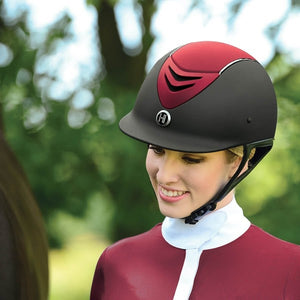
How To Correctly Fit A Helmet
Correct helmet fit is important not only for safety but also for comfort. A helmet should fit nice and snug on your head without it being too tight and the harness in the front should have a nice V when you snap up the chinstrap.
Step 1 (Measuring): Start by measuring around the head above the ears and just above the eyebrows. Helmets come in various sizes, and each manufacturer will have their own sizing chart.
Try on several different helmets in your size until you find one that feels comfortable. Helmets come in a variety of styles made to fit different head shapes (some are oval and some are round), so it’s important to try on a variety of helmets in order to determine which one works best for you.
Never try to guess your helmet size or buy one for your child that is too big in hopes that he or she will grow into it.
Step 2 (Positioning): The helmet should sit snug and level on your head without it being too tight. It should be about an inch (or two finger-widths) above your eyebrows.
Step 3 (Adjusting the Harness): The side straps of the harness should create a nice “V-shape” when you snap up the chinstrap. The chinstrap should be fairly snug and not hanging loose under your chin.
When you move the brim it should move your eyebrows slightly, which indicates that it’s a nice good fit on your head.
Step 4 (Final Check): Your helmet should be comfortable but not too tight. A good test is to tip your head over, and give it a good shake. Your helmet should stay on and not move around.
It is recommended that you replace your helmet at least every five years from the date of purchase. Any helmet involved in an accident needs to be replaced immediately.
View the One K range.





